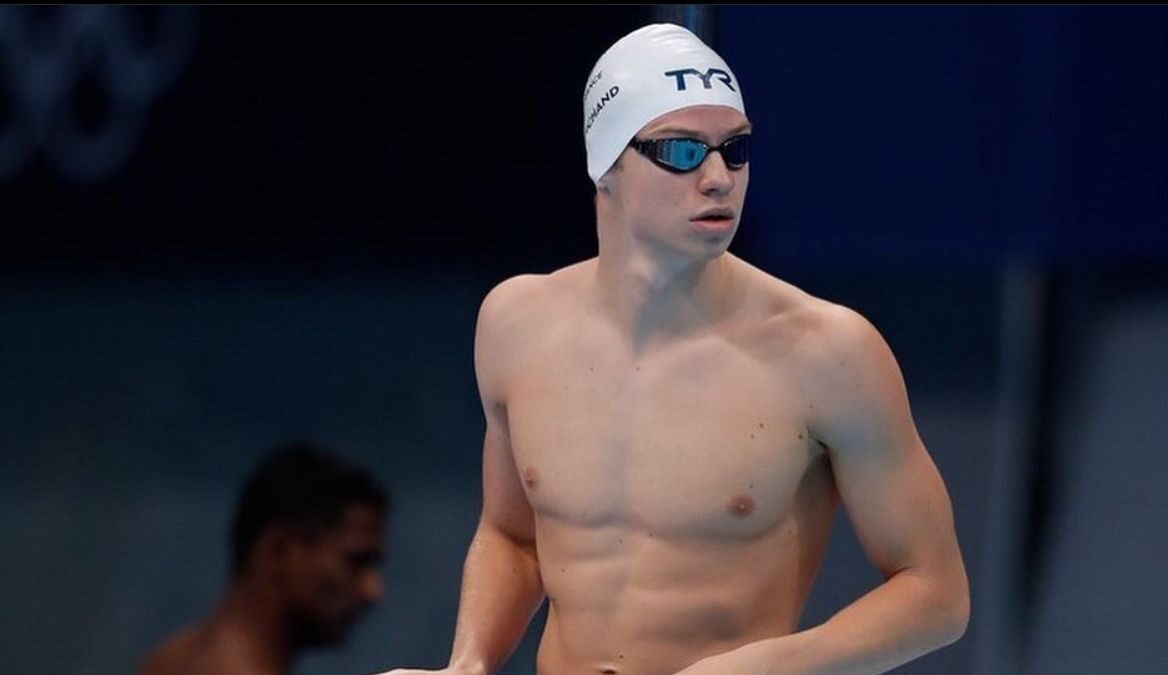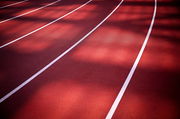

Leon Marchand is ready to light up the Paris 2024 Olympic stage at La Defense Arena, where he’ll make his mark as the French poster child and a five-time world champion. The 22-year-old is poised to make a splash on Sunday, July 28, in his bread-and-butter event, the 400m individual medley. Coming into these games with a world record of 4:02.50, Marchand has eclipsed Michael Phelps’ 15-year-old mark of 4:03.84, proving he’s the one to beat.
Watch What’s Trending Now!
But what’s behind Marchand’s record-shattering success? Will he be able to win 4 medals? It’s not just about being ahead of the game; physical attributes also give athletes a leg up in the pool. Considering that, let us take a look at where he stands against the other Olympians.
ADVERTISEMENT
Physical Attributes
Swimmers are well known for being among the athletes utilizing their height as a key advantage. Their longer arms, legs, and torsos provide them with a surface area to navigate through the water, giving swimmers a natural edge that often positions them as top performers, in swimming competitions.
Leon Marchand, who measures 187 cm (6 ft 2, in) and weighs 77 kg (170 lb) falls a bit below the height and weight of an Olympic swimmer, who stands taller at around 84 kg (185 lb). Nonetheless, Marchand demonstrates that while he may not tower over others he remains a presence in the water.
Top Stories
Sources: John Harbaugh Wasn’t Fired, Left Ravens After Refusing Major Staff Changes

Bill Cowher’s Strong Message to Steelers on Firing Mike Tomlin After HC’s Blunt Playoff Message

Bengals’ Cam Taylor-Britt Sentenced to Jail: Everything We Know About Charges Against Him

Kyle Tucker Handed Blunt Reality Check as Blue Jays Shift Focus to Bolster Vladimir Guerrero Jr.

US Visa Rejections Put Major Track & Field Records at Risk at World Cross-Country Championships

Chiefs’ $58M News Complicates Travis Kelce’s Return As TE Gets 8-Figure Update

ADVERTISEMENT
Analysis
Height Analysis:
Leon Marchand is slightly shorter than the average male Olympic swimmer.
ADVERTISEMENT
- Michael Phelps measuring 6f feet 3 inches
- Matt Grevers at 6’9″
- Tom Jager at 6’4″
- Nathan Adrian is 6’6″
- Matt Biondi is 6’7″
Weight Analysis:
In sports training, body weight can have both negative impacts. When it comes to swimming factors, like buoyancy, technique, and body mass index are more crucial than the number on the scale. Even though Leon Marchand is slightly smaller and lighter than Olympic swimmers, he excels in the sport. His success demonstrates that swimming isn’t, about body features. Skill and technique play roles too.
ADVERTISEMENT
- Michael Phelps is 90kg
- Matt Grevers is 109kg
- Tom Jager is 82kg
- Nathan Adrian is 100kg
- Matt Biondi is 95 kg
Implications
In swimming, even small differences, in height and weight can have an impact on performance by affecting how well a swimmer stays afloat and moves through the water. Tall swimmers tend to have lung capacity and more body surface area, which can help them float better. However, if they are on the heavier side, it may be harder for them to stay buoyant, requiring effort to keep above water. On the other hand, swimmers with a sleeker physique and lower weight experience less resistance in the water, allowing them to glide through with less difficulty. By using techniques like maintaining a body position, swimmers can reduce drag. Improve their overall efficiency, in the water.
ADVERTISEMENT
Furthermore, the power, to weight ratio is a factor in determining how well a swimmer performs in the water. Swimmers who have a higher power-to-weight ratio can exert a force in relation to their body weight, leading to greater speed and improved acceleration. Lighter swimmers often showcase agility and nimble turns, whereas heavier swimmers can harness their strength but must carefully manage their weight to enhance their speed and stamina. By finding the balance through customized training and technique adjustments, swimmers can optimize their performance.
ADVERTISEMENT
ADVERTISEMENT
ADVERTISEMENT

